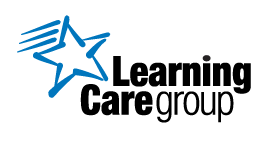Learning Care Group
Leveraging IT to Evolve Customer Experience
Cloud Adoption Framework Drives Cloud Migration Success
Customer Profile: Learning Care Group
Learning Care Group, Inc. is the second-largest for-profit childcare provider in North America and a leader in early education. Their programs are designed for children aged six weeks to twelve years. Across our nine unique brands, they are committed to creating state-of-the-art facilities with the latest technology and expert-driven curricula created by their in-house Education Team.

Website: www.learningcaregroup.com
Industry: Child Care Provider
Headquarters: Novi, MI
Size: 900+ Schools, 18k+ Teachers, 130k+ Children
Business & Technology Challenge
Learning Care Group (LCG) is the second-largest for-profit childcare provider in the United States. They operate across ten brands with approximately 1000 learning centers and serve up to 150,000 children each day. LCG handles IT infrastructure and support for all these locations and manages their critical applications for teachers and young learners. LCG engaged with Coretek to embark on a cloud transformation journey initiated by their need to exit a co-located data center, where their contract would expire at the end of October 2020. LCG had a great interest in Azure but was uncertain of the investment required to migrate and how they would apply governance on this new cloud environment. So naturally, since Coretek is a nationally recognized Microsoft Azure Expert MSP, the decision to partner with Coretek made complete sense.
Coretek Solution
Coretek and Microsoft partnered to build an Azure Foundations Assessment for LCG. An Azure Foundations Assessment is the first step in understanding the technology assets the customer owns and how they can move to Azure and an assessment (Total Cost of Ownership) of the costs associated with the move and ongoing maintenance of the environment. In addition, the customer is given insight into the overall need and benefits of moving to Azure. As well as a path to the future for how best to operationalize costs, reduce costs, increase workflows, and move workloads to PaaS (removing the ownership of traditional IaaS environment from the IT’s shoulders).
The completed Azure Foundation Assessment is an entire plan for moving LCG’s assets, specifically:
What the new Azure environment will look like.
Tools and skills required to support the environment.
Cost over time for consumption and operations.
Timeline and work effort to move workloads to Azure (including workloads that would require extra attention.)
Therefore, after finalizing the assessment and because of LCG’s tight timeline to move from their co-located datacenter, Coretek performed a quick “lift and shift” motion to get their assets to an Azure IaaS model enabling them to meet the deadline of the datacenter contract.
The next stage for LCG’s cloud adoption journey was a Microsoft Cloud Adoption Framework (CAF) Engagement. This engagement reviews what a customer has in place currently for governance and policies in their data center and considers how they desire to evolve and what they want to achieve for their business with technology.
In this stage, Coretek takes the customer’s business goals and turns them into an Azure Landing Zone or plan for what their Azure environment will look like to achieve that vision. Then, Coretek leverages Azure policy and blueprints to create standardization across the environment. For example, they ensure that all resources moving into the environment follow specific policies and have the same naming convention, tags, IP schema, etc. Coretek also leverages Azure native tools like Azure Monitor for alerts and operational awareness. The Azure Landing Zone is critical to ensuring a solid framework for the data center built in Azure.
After the Azure Landing Zone was complete, and since much of LCG’s technology was current, Coretek would perform an Azure Rehost Migration. A Rehost Migration is a move to the cloud without any changes to the operating system or data. Leveraging Azure Site Recovery, the Coretek team could replicate the disks and data to Azure, attach the compute required as identified in the Azure Foundation Assessment and then plan the move over to the production environment.
To ensure a smooth move to production, Coretek uses Azure Migration Factory, which consists of a five-week rehost process where they work with the customer to identify application owners and dependencies. This process ensures that, during the migration, the team moves workloads that rely on each other—together to ensure they do not create a broken hybrid environment. After the applications are migrated, the customer’s application owners perform user acceptance testing. Finally, the Coretek team sets up the necessary disaster recovery and backup policies identified in the CAF Engagement. A successful Rehost Migration like Coretek performed for LCG ensures that the on-prem environment is perfectly replicated in Azure with all policies and governance applied as identified by the teams during the CAF.
Coretek’s Five-Step Cloud Migration Process
1. Azure Foundations Assessment
2. Cloud Adoption Framework and Azure Landing Zone Deployment
3. Migration (either Refactor or Rehost, moving the workloads to Azure)
4. Management (technical operations and cost of the new environment)
5. Security (ever-changing and requires continual management)

Results
Learning Care Group's expected outcomes for their migration were identified early. They wanted to leverage the cloud to scale their business and improve their customer's experience.
By moving from an aging co-located data center to hosting their entire infrastructure in Azure, LCG reaps the cost benefits of the cloud while also removing the need to manage and own their data center. LCG's new environment consists of 180 servers with a new project that focuses on modernizing legacy database infrastructure to gain performance improvements and obtain better data for their business.
Coretek's Smart Managed Services coupled with the stability and reliability of Azure enables Learning Care Group to focus on growing their business, not managing IT infrastructure. Instead of viewing IT as a budget item, they now leverage IT to help evolve their business and improve their customer's engagement and experience with their learning centers and, in turn, continue to grow and lead innovation in their industry.


 Smart Cloud
Smart Cloud
 Smart Workspace
Smart Workspace
 Managed Services
Managed Services